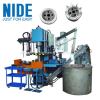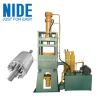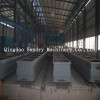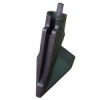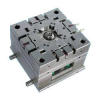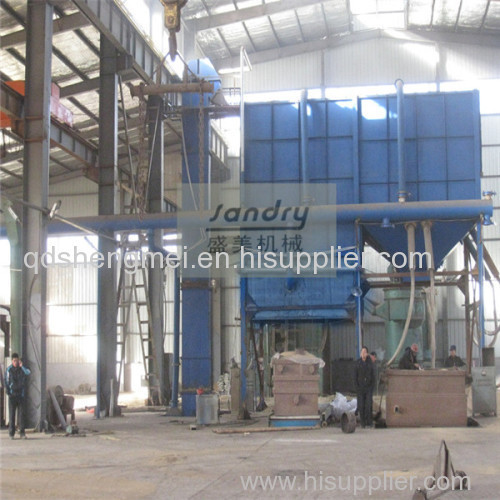High Efficiency Lost Foam Casting Machine
Product Description
The lost foam casting process originated in 1958 when H.F. Shroyer was granted a patent for the cavity-less casting method using a polystyrene foam pattern imbedded in traditional green sand, which was not removed before pouring of the metal. The polystyrene foam pattern left in the sand mold is decomposed by the molten metal. The metal replaces the foam pattern, exactly duplicating all of the features of the pattern.
Early use of the process was limited to rough castings because the foam material used was coarse and hand fabricated, and because the packed green sand mold would not allow the gases from the decomposing foam pattern to escape rapidly from the mold; the trapped gases usually resulted in porous castings.
This process is characterized by the use of expendable polystyrene (EPS) patterns of the component to be produced. This pattern is coated with a refractory material, placed in a flask, and surrounded with sand compacted by a vibrating system. Molten metal is then poured into the flask, which vaporizes the polystyrene pattern and replaces it, to form its exact shape.
The main advantages of this process are the reduction of the financial cost of the casting of complex shapes, the subsequent decrease in operating costs, and the minimization of the machining steps of the casting product. Thus, the lost foam process is nowadays successfully used for steel, ductile iron, aluminum, and gray cast iron castings, in transport and automotive market applications, such as for diesel engine cylinder heads, crank shafts, differential cases, compressor bodies, motor vehicles, among many others.
Recent developments in the lost foam process have focused on controlling the process parameters that affect the casting accuracy and metallurgical quality, the dimensional tolerance of products, and the compaction of the sand mold. For example, the replacement of silica sand with a low-expansion refractory, such as synthetic mullite, has been found to reduce burn-on defects significantly and to control the effect of the sand temperature on dimensional reproducibility. In addition, the round mullite grains flow more easily than the angular sand ones, thereby lowering the compactor accelerations needed to fill and compact the mold. The high cost of the synthetic mullite is the main drawback in the development of this technique.
Because the casting is an exact representation of the polystyrene foam pattern, the first critical step in the lost foam process is to produce a high-quality foam pattern.
a) Flask that contains a 25 to 75mm sand base
b) Positioning the pattern.
c) Flask being filled with sand, which is subsequently vibratory compacted.
d) Final compact ready for pouring.
Lost foam casting is also referred to in the literature as evaporative pattern casting, evaporative foam casting, the lost pattern process, the cavity-less expanded polystyrene casting process, expanded polystyrene molding, or the full mold process. The lost foam process is already considered to be among the greatest recent successes in the development of casting processes, and its use is expected to increase in the future.
The advantage of the casting process
This casting process is advantageous for very complex castings that would regularly require cores.
It is also dimensionally accurate, maintains an excellent surface finish, requires no draft, and has no parting lines so no flash is formed.
As compared to investment casting, it is cheaper because it is a simpler process and the foam is cheaper than the wax.
Risers are not usually required due to the nature of the process; because the molten metal vaporizes the foam the first metal into the mold cools more quickly than the rest, which results in natural directional solidification.
Foam is easy to manipulate, carve and glue, due to its unique properties.
The flexibility of LFC often allows for consolidating the parts into one integral component; other forming processes would require the production of one or more parts to be assembled.
Company Information
Qingdao Shengmei Machinery Co., Ltd is specialized in producing vacuum process casting machine, resin sand reclamation and molding machine, lost foam casting machine, dust collector, shot blasting machine and sand blasting machine. We always bear "Honesty is the source and we should produce boutique" in mind and insist on the business policy of "quality of survival, innovation and development, to manage for efficiency". With first-class technology, first-class products and first-class service, we wholeheartedly cooperate with you.


